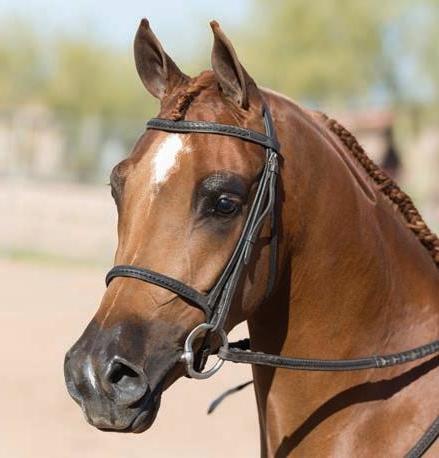
3 minute read
Written by Jean Paul Guerlain
Arab Horse Couture is pleased and honored to feature a regular quarterly column written by Jean Paul Guerlain. In the past, in addition to his role as Master Perfumer for the House of Guerlain, Jean Paul Guerlain also accumulated World Championships in Dressage and Carriage Driving. Jean Paul will be sharing his extreme knowledge and his love of horses with the readers of this magazine.
Guerlain is a French perfume house, amongst the oldest in the world. The House of Guerlain was founded in 1828, when Pierre-Francois Pascal Guerlain opened his perfume store in Paris. Jean Paul Guerlain is fourth generation Master Perfumer and the last family Master Perfumer. Jean Paul continues to travel the globe to develop new fragrances.
Riding in the Classical Way on Your Beautiful Arabian Horse
Written by Jean Paul Guerlain
Classical riding works because it has stood the test of time. It works without fear or force and most definitely without gadgets. It is working with, never against, the horse. It is opening the lines of communication between horse and rider, listening to the horse, being aware of how every move you make means something to the horse and being able to ask yourself, “What did I do to make the horse respond in this manner?” When you do not get the response you were looking for, there is nothing about making him do it, the responsibility lies with you, the rider, to make things comfortable for the horse.
These results are achieved through cooperation not coercion. Classical riding is foremost concerned with the acquisition of a classical seat that is a balanced, deep and feeling seat. In the context ‘seat’ includes the seat bones, pubic arch, thighs, lower back and very importantly, the abdominal muscles. Classical

Photo by Nancy de Saegher

riders develop wonderfully light responsive horses they ride from their center. The horse is ridden from the seat first, then the legs and into the hand. The hands receive what the legs put into them.
The emphasis is placed on you the rider to learn about your whole body and how slight variations in the way you hold yourself affect the way the horse moves beneath you. How can you expect self-carriage of the horse when you are not in selfcarriage yourself? When you think of classical riding you think of the Spanish Riding School in Vienna, Austria or the Cadre noir in Saumur, France. In fact, classical riding is correct riding. It is horsemanship, not just knowing how to ride, that includes all around knowledge of the horse as a species, its psychology and physiology. Now you must find a good classical instructor who will understand the sensitivity and intelligence of the Arabian horse. The basics of a well-ridden and trained horse are the same for the Arabian horse as for other breeds. Sadly, many times you see the Arabian horse being treated and ridden like another species. The Arabian horse loves to be ridden (ridden correctly), to have a job to do to express themselves and to burn some energy. Just a few basics, no matter what discipline you enjoy with your Arabian horse, you must make sure that he is ridden round, with the hindquarters underneath so the back is round not concave. Otherwise you may encounter back problems with your horse. Let me give you a few names of classical riders who have written some wonderful books: Alois Podhajsky, who became the Director for the Spanish Riding School in 1939; Nuno Olivera, an outstanding Portuguese Dressage rider; and Egon Von Neindoff author of “The Art of Classical Horsemanship”.
Also reminding you all of the vast responsibility you have in your life of owning an Arabian horse. Be sensitive, loving, humble, understanding, patient and show empathy and humility. They will become your best friend. Sometime, ask yourself the question: do you deserve a beautiful Arabian horse in your life? And please, if you must sell your horse, see that your loyal friend is going to a good loving home.
Wishing you all a wonderful Autumn. For questions, please contact: vitalcell.km@gmail.com

